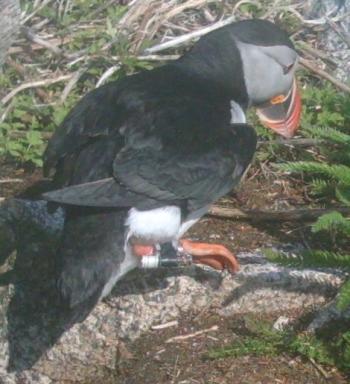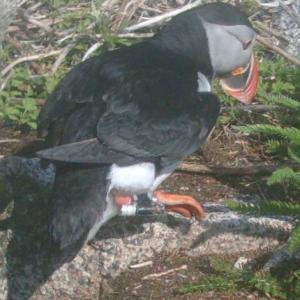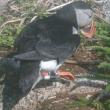Greenland or bust
The mystery of where migratory birds go has been one that has intrigued the human mind for centuries. Early explanations seem absurd to us now: the belief that swallows dived down into the mud under ponds for the winter being one of the most cited.
For the last century or so, bird banding has been about the only tool available for trying to figure out more about the breeding or wintering destinations of birds. Unfortunately, so few banded birds are ever found away from their original banding location that to find even a few requires banding many thousands over many years.
Even with that effort, the scarcity of band returns and the scattered geographic locations of banding locations had left all but the broadest understanding of migratory connectivity an elusive goal. Despite the difficulties of this “old” technology, some new facts continue to surprise. A scientific paper published last year, for example, showed a significant number of snow buntings that occur in New England make the amazing trek to Greenland to nest!
But in the past decade there has been an explosion of new tools and technology that has unleashed a torrent of discoveries about where migratory birds are coming from and/or going to – and when and how they are getting there.
One surprising technique has been to sample feathers or toenails from birds to test the ratios of isotopes of common elements like hydrogen, carbon and sulfur. Maps of the concentrations of different isotopes in the environment across continents have been developed that allow these bird samples to be matched and at least broadly know where the bird had been living when those feathers or toenails had grown.
We have written before in this column about how lightweight satellite transmitters are now being regularly used to track the daily movements of many larger bird species. One example is the whimbrel that was tracked last fall as she flew for days over the Atlantic Ocean, encountered Hurricane Isaac, and finally made landfall in Brazil.
Just last week, a birder posted on the Maine birding listserve that (according to the daily maps shown on the Web) a satellite-tagged golden eagle migrating from the Mid-Atlantic states to Quebec’s Gaspé Peninsula was somewhere in central Maine.
One of the newest technologies in use now for tracking birds is called a geolocator. This small device is strapped to a bird (it’s light enough to be used on much smaller species than satellite tags).The bird then carries the device wherever it goes for the next year until it returns to the original capture site. The device records day length each day and stores these data. If the bird can be recaptured and the device reacquired, then that information can be downloaded and the day length information used to calculate where the bird was throughout the past year.
In the past few years, more and more scientific papers are coming out that are giving us more precise information on where everything from puffins to terns to thrushes to blackbirds are coming from and where they are going, and when they make these movements. Some Atlantic puffins from Seal Island in the Gulf of Maine were tracked using this technology; and they were found to travel north to the Labrador Sea and south almost to Bermuda over the course of a year.
Several willets (a large, long-billed shorebird) from a southern Maine nesting location were tracked with geolocators and found to have traveled over 5,000 kilometers south to Brazil for the winter.
Given what we now know thanks to technology, it’s exciting to think what more we could learn about bird movements when the next wave of technology comes around.
Dr. Jeff Wells is the senior scientist for the Boreal Songbird Initiative. During his time at the famed Cornell Lab of Ornithology and as the Audubon Society's national bird conservation director, Dr. Wells earned a reputation as one of the nation's leading bird experts and conservation biologists. Jeff's grandfather, the late John Chase, was a columnist for the Boothbay Register for many years. Allison Childs Wells, also formerly of the Cornell Lab of Ornithology, is a widely published natural history writer and a senior director at the Natural Resources Council of Maine. Together, they have been writing and teaching people about birds for decades. The Maine natives are authors of the highly acclaimed book, “Maine's Favorite Birds.”
Event Date
Address
United States

























